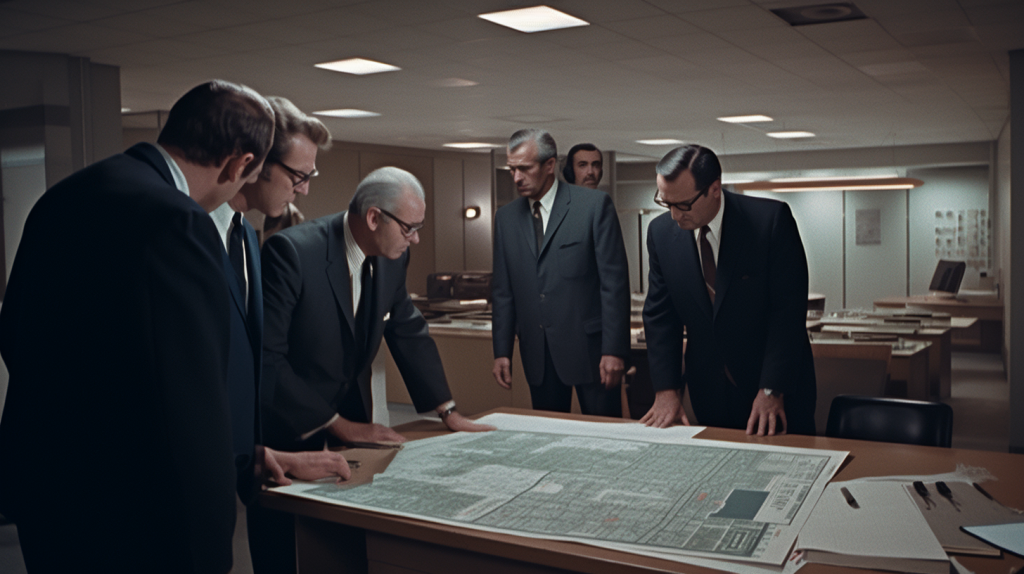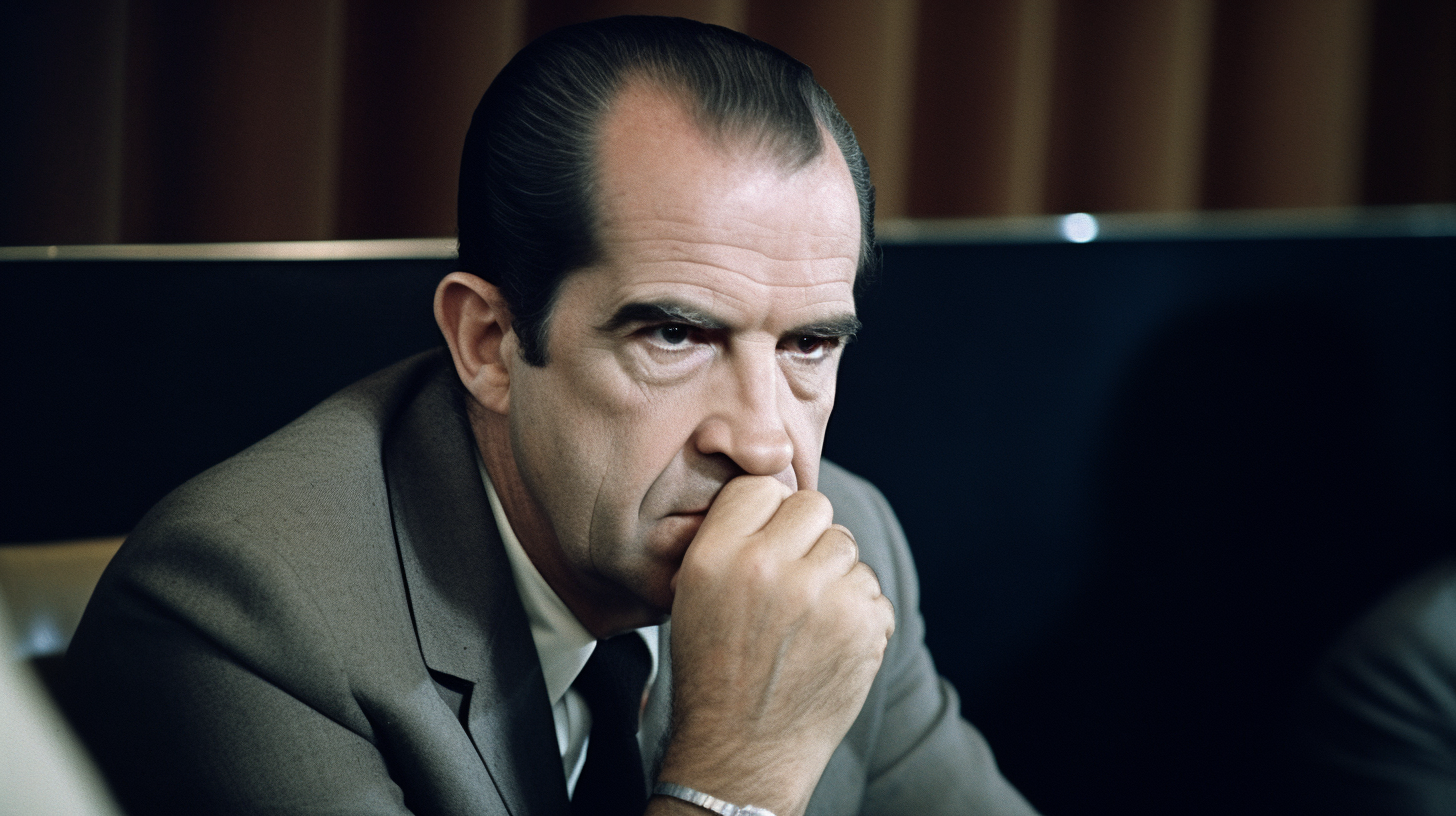The Watergate Scandal was a major political conspiracy that occurred in the United States during the early 1970s. It involved a series of criminal activities, cover-ups, and abuses of power by the Nixon administration. The scandal ultimately led to the resignation of President Richard Nixon in 1974, making him the first and only U.S. president to resign from office. This article delves into the key events and players involved in the Watergate Scandal, shedding light on the truth behind this infamous chapter in American history.
The Watergate Break-In
The pivotal event that led to the unraveling of the Watergate scandal was the break-in at the Democratic National Committee (DNC) headquarters in the Watergate complex. In the early hours of June 17, 1972, five men were arrested by plainclothes police officers inside the DNC offices. The arrested men were Bernard Barker, Virgilio Gonzalez, Eugenio Martinez, James McCord, and Frank Sturgis. All were found carrying electronic bugging equipment, cameras, and thousands of dollars in cash.
The intruders were later revealed to be part of a larger group known as the “Plumbers,” which had been assembled by the Nixon administration to stop the flow of information leaks and gather intelligence on political opponents. Led by former CIA agent E. Howard Hunt and ex-FBI agent G. Gordon Liddy, the Plumbers had already carried out several clandestine operations, such as the burglary of the office of Daniel Ellsberg’s psychiatrist, the man responsible for leaking the Pentagon Papers.
The initial break-in at the Watergate complex was not the first attempt by the Plumbers to infiltrate the DNC offices. In late May 1972, they had successfully entered the offices to plant wiretaps on the phones of DNC Chairman Lawrence O’Brien and another party official. However, due to technical issues with the listening devices, they decided to make a second attempt in June, which ultimately led to their arrest.
During the June break-in, the burglars were caught because they had made a crucial mistake. They had placed tape over the latch of a door leading to a staircase in the building, preventing it from locking. A security guard named Frank Wills noticed the taped door, removed the tape, but then found it re-taped when he returned later on his rounds. Suspecting something was amiss, Wills called the police, leading to the arrest of the five men.
Following the arrest, the connection between the burglars and the Nixon administration began to unravel. James McCord, one of the burglars, was found to be a former CIA agent and a security coordinator for the Committee to Re-elect the President (CREEP). Subsequent investigations revealed that the break-in had been financed through a secret fund controlled by CREEP, which had been used to finance various illegal activities designed to undermine Nixon’s political opponents.
The Cover-Up Begins
As the investigation into the break-in progressed, it became clear that the Nixon administration was attempting to cover up its involvement. The White House and the CRP sought to suppress evidence, obstruct the FBI’s investigation, and provide financial support to the arrested burglars in exchange for their silence.

Secret Payments and Hush Money
To keep the burglars quiet and ensure their loyalty, the Nixon administration arranged for secret payments, often referred to as “hush money.” These payments, made through various channels, aimed to prevent the burglars from implicating higher-ups in the scandal. The administration’s efforts to secure the burglars’ silence further demonstrated its determination to conceal its involvement in the Watergate break-in.
Attempts to Derail the Investigation
Throughout the investigation, the Nixon administration employed various tactics to hinder the FBI’s progress. The White House sought to have the CIA interfere with the FBI’s work by falsely claiming that the break-in was part of a national security operation. Additionally, administration officials tried to influence the outcome of the investigation by pressuring the Justice Department and manipulating the media. These actions contributed to the growing suspicion that the White House had something to hide.
The Role of the Press
The Washington Post played a crucial role in uncovering the truth behind the Watergate Scandal. Reporters Bob Woodward and Carl Bernstein conducted extensive investigations, relying on information provided by a secret informant known as “Deep Throat.” Their reporting exposed the Nixon administration’s illegal activities and cover-up attempts, keeping the scandal in the public eye.
The Senate Watergate Committee
In 1973, the Senate established the Select Committee on Presidential Campaign Activities, also known as the Senate Watergate Committee. The committee held televised hearings, during which key figures in the scandal, such as former White House Counsel John Dean, testified about the Nixon administration’s wrongdoings. These hearings captivated the American public and fueled widespread demands for accountability.
The “Saturday Night Massacre”
In October 1973, the Watergate scandal took a dramatic turn when Nixon ordered the firing of Archibald Cox, the special prosecutor appointed to investigate the scandal. This decision was a direct result of Cox’s insistence on obtaining the secret White House tape recordings that Nixon had been making of his conversations and meetings. Nixon had initially agreed to provide summaries of the tapes but refused to hand over the actual recordings, citing executive privilege. Cox rejected this compromise and continued to push for access to the tapes, leading Nixon to take drastic action.
On October 20, 1973, Nixon ordered Attorney General Elliot Richardson to fire Cox. Richardson, believing the order to be a violation of the principles of justice and the independence of the special prosecutor, refused and instead resigned in protest. Nixon then turned to Deputy Attorney General William Ruckelshaus, who also refused the order and resigned as well.
Eventually, Solicitor General Robert Bork, who was next in line at the Department of Justice, carried out Nixon’s order and fired Cox. Bork later claimed that he had only done so after receiving assurances from Richardson and Ruckelshaus that it was legally permissible for him to take on the role of acting attorney general and that they believed it was in the best interest of the country for him to comply with Nixon’s order.
The events of that night, dubbed the “Saturday Night Massacre,” were a turning point in the Watergate scandal. The firings and resignations sparked outrage from the public and the media, further eroding trust in the Nixon administration. The incident also led to increased calls for Nixon’s impeachment, with many seeing his actions as an attempt to obstruct the investigation into the Watergate break-in and subsequent cover-up.
The Tapes and the Smoking Gun
During the Senate Watergate Committee’s hearings, it was revealed that Nixon had secretly recorded conversations in the Oval Office. The tapes were subpoenaed, but Nixon refused to release them, citing executive privilege. Eventually, the Supreme Court ruled that Nixon must release the tapes, leading to the discovery of the “smoking gun” tape, in which Nixon is heard discussing plans to thwart the FBI’s investigation.

Nixon’s Resignation
With impeachment proceedings looming, Nixon chose to resign from office on August 9, 1974. Vice President Gerald Ford assumed the presidency and later issued a controversial pardon for Nixon, shielding him from criminal prosecution for his involvement in the Watergate Scandal.
In conclusion, the Watergate Scandal was a complex web of political conspiracy, criminal activities, and cover-ups that ultimately led to the downfall of President Richard Nixon. The scandal exposed the dark side of American politics, prompting widespread calls for reform and greater transparency in government.




